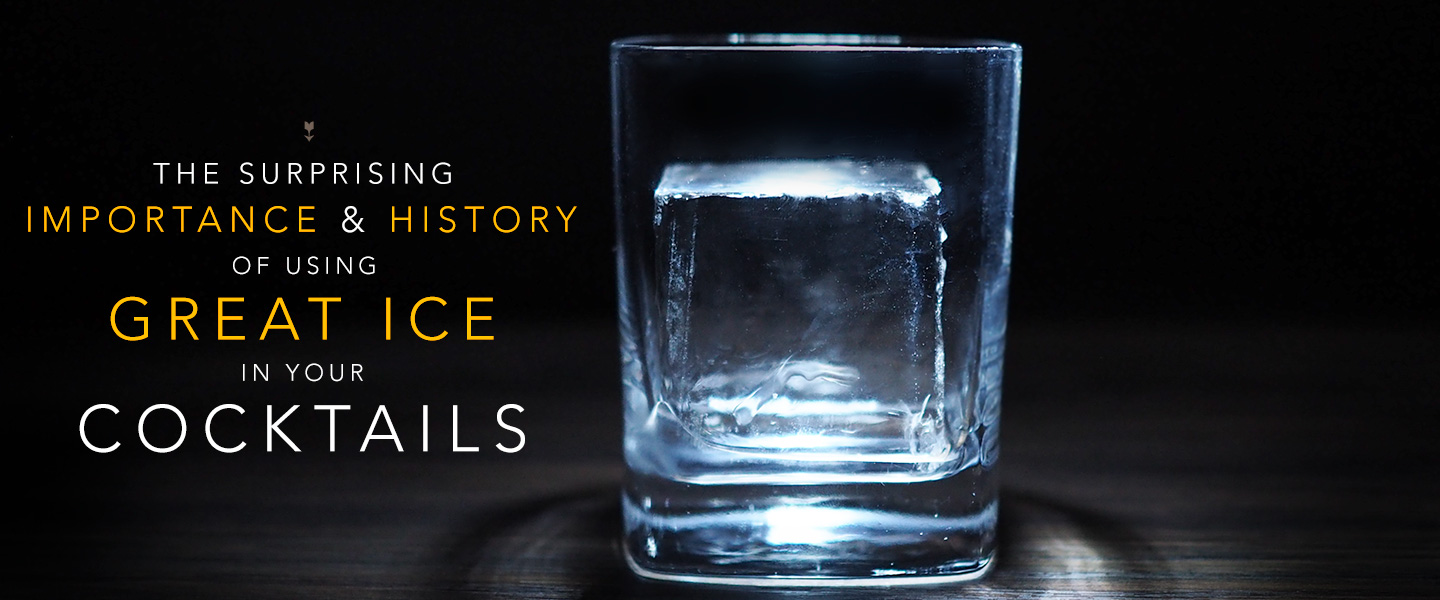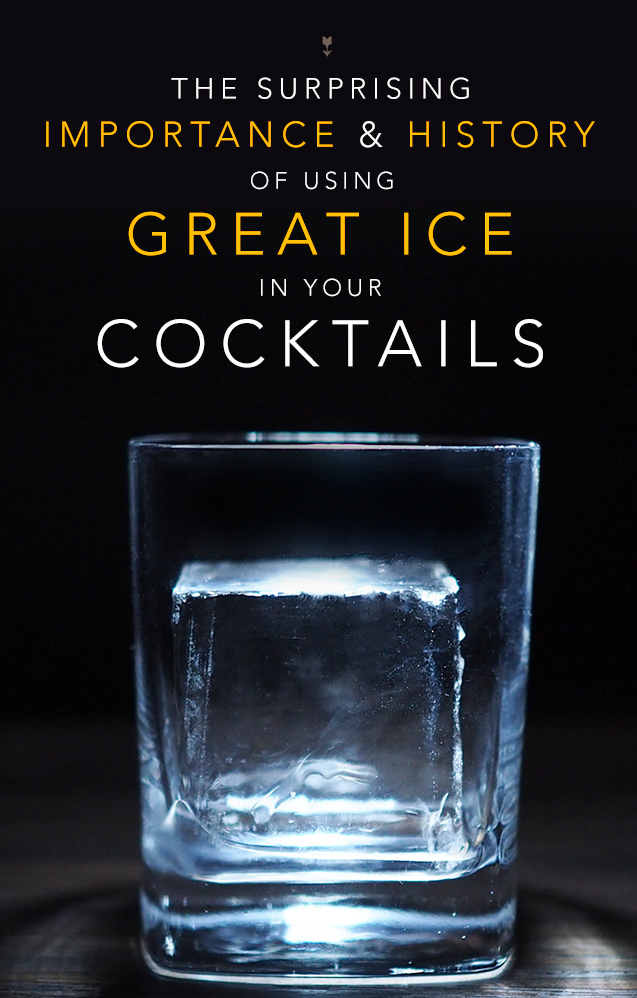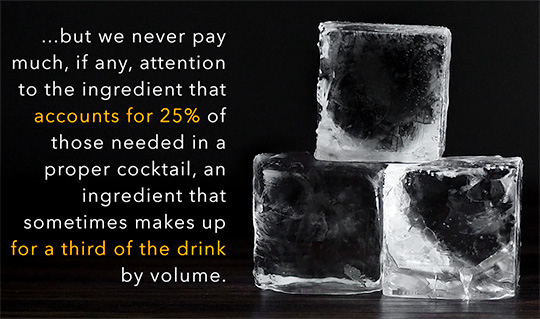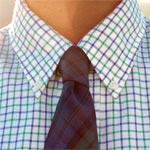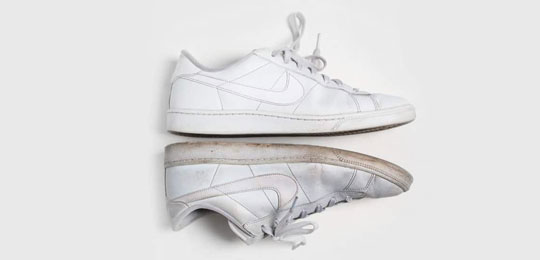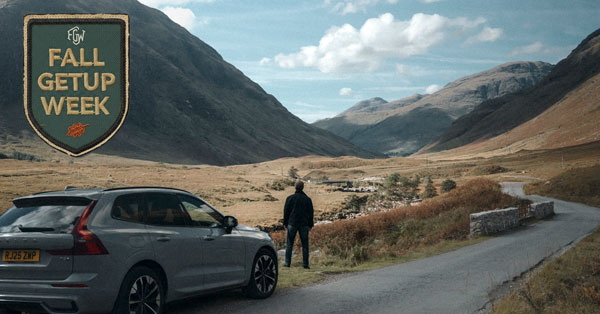I know a conversation about the ice in your drink could seem a little watered down but the fact of the matter is that I regularly get people coming to me and saying they purchased the exact same ingredients as I use behind the bar, used the exact same ratios and followed the instructions I gave them down to the very last detail and still they were unable to achieve the same result. These people wait with bated breath expecting to be gifted some magicians secret from me and always my response is “what kind of ice did you use?”
So what kind of ice should you use? To understand that question I think we need to take a step back and realise just how important ice can be in your drink. Us barman are a fickle sort, steeped in tradition and we still hold the true definition of the word ‘cocktail’ to the one presented to us in 1806 as “a stimulating liquor, composed of spirits of any kind, sugar, water, and bitters.”
Now there are countless articles and options for both spirits and bitters, and most of us are well aware of our different choices for sugar, should it be raw, demerara, cane or even a honey or syrup, but the same can’t be said for the ‘water’ component listed, whose addition to a drink now-a-days can be attributed to ice. We regularly swoon when a fine spirit is chosen to make a drink, we are comforted when we watch a bartender use anything other than a bright white sugar cube and we gasp in amazement at artisanal bitters but we never pay much, if any, attention to the ingredient that accounts for 25% of those needed in a proper cocktail, an ingredient that sometimes makes up for a third of the drink by volume. If you’re still having trouble grasping the importance of ice try to think of it as the stock of a cocktail, you wouldn’t put zero effort in the stock you put in your soup, would you?
But that’s the thing with ice, whether it be in a cocktail, as a sculpture or crushed and sitting under a plate full of oysters on the half shell, we really take it for granted. This wasn’t always the case, there was a point in time that ice was a novelty throughout most of the world, sometimes never seen in certain climates but that all changed with a young Bostonian who, in 1833, with no refrigeration, shipped 180 tons 16,000 miles from Boston Harbour to Calcutta, India… I’ll pause while you fact check that statement and look at a map to remember where India is… 180 tons, 16,000 miles; the journey took four months.
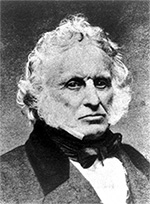
On February 10, 1806, The Boston Gazette reported, “No joke. A vessel with a cargo of 80 tons of ice has cleared out from this port for Martinique. We hope this will not prove to be a slippery speculation.” Once the ship did arrive in Martinique, although in relatively decent condition, ice was such a foreign concept that nobody bought it, Tudor landed in debtor’s prison multiple times, suffered through depression and exhaustion but refused to give up on his dream until the booming success of his 1833 shipment.
When Tudor died in 1864 he was almost singlehandedly responsible for the shipment of ice around the globe and it would still be another 80 years before electric refrigeration.
Tudor harvested his ice from giant fields of frozen pond water, which to us modern-day drinkers might sound a little unenticing but these ponds contained near pristine water and the ice they produced was crystal clear. You see when water freezes it forms crystals, and if the water freezes slowly enough in a large enough body of water those crystals, which should form at the surface of the water, will push all the impurities within the water away (gases, salt, bacteria) leaving you with pure ice.
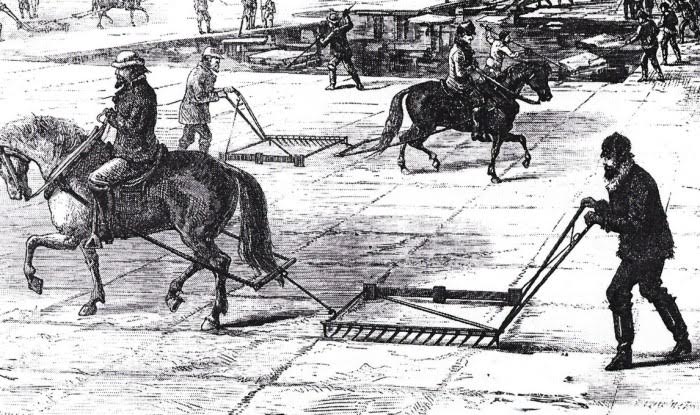
Ice harvesting from New England ponds
You can see this effect in action with a standard ice cube tray in your freezer, where you should notice cloudy formations where the water froze last, all that stuff is non-ice and it’s going right into your drink.
To help further understand how ice freezes and melts we’re going to be discussing thermodynamics, which is a perfect time to point out that I am not a scientist, so please be gentle in the comments section. The two ideas that help us understand the changes in water jumping between a solid and liquid state are enthalpy and entropy. Which I like to over simplify and think of as order and disorder, enthalpy being order and entropy being the little shit disturber that lets it all go to hell. Enthalpy wants to freeze your ice and entropy wants to melt it, neither one of them ever really completely win this battle but who reigns over the other at any given time is decided by temperature: If the temperature is at -5°C/23°F enthalpy has the upper hand, if it’s 20°C/60°F then it’s entropy’s ball game. It's at 0°C/32°F where things get interesting, and that’s where our concerns lie.
The surface of the cube of ice in your drink isn’t static, molecules are constantly both melting and freezing, If the surrounding temperature is above 0°C/32°F more molecules will melt than freeze and if the temperature is under 0°C/32°F then it’s the opposite, at exactly 0°C/32°F it reaches an equilibrium and the melting and freezing occurs at the same rate, enthalpy and entropy are tied. So if your drink gets its chill from ice, and ice melts at 0°C/32°F then the coldest you should be able to get your drink is 0°C/32°F, right? Not quite. See once you add alcohol into the mix you create more disorder, there’s more ways for the molecules to now arrange themselves, and as I said disorder=entropy.
As ice melts it absorbs heat, chilling our drink, it draws that heat from the drink and the cocktail gets more diluted, as the water content in the drink rises, entropy loses some of it’s ground and eventually a new equilibrium is reached where both the ice and the drink are both below 0°C/32°F, which is the new freezing point of the drink.
So how do we obtain this crystal clear ice that will chill our drinks so perfectly and without adding any impurities to the mix?
A quick search online will list a plethora of tips and tricks, and if you follow them you’ll boil and filter water, modify a cooler to use directional freezing methods, you’ll be pulling all your food items out of your freezer as to not impart any odors into the ice, you’ll set your freezer temperature as low as possible to not super-chill the ice and you’ll wait a few days and after all that chances are you still won’t end up with an acceptable product.
Why?
Because making ice is actually harder than it sounds, I’ve done all those steps and more and still come up short. If getting perfect ice is important to you then you’ll have to do what I do: buy it. I know it sounds defeatist but I can assure you it’s the most logical way of dealing with it, making clear ice just isn’t worth the effort at home. You can get blocks of the stuff from any company that does ice sculptures and cut it down at home and most major cities now have ice services designed with the drinking public in mind that sell pre-made cubes and spheres.
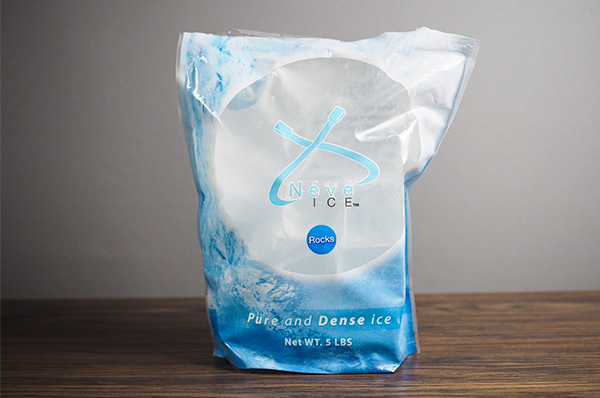
2″x2″ cocktail ice cubes purchased at K&L Wines in Los Angeles for $9
Now let us say you’re not as obsessed with ice as I am. You’re not a bad person for it, in fact I envy the fact that you can go out and not consciously pay attention to what type of ice a bar or restaurant uses in an effort to determine how much they’ve invested into their drink program. How do you put minimal time and effort into your ice program at home?
I’d start with a few minor investments such as a water filter (like Brita) and some proper ice trays like the ones Tovolo makes. You might want to consider lowering the temperature of your freezer to insure a slower freezing process. I’d recommend boiling your filtered water and pouring it into your ice molds, then let it rest and cool to room temperature before putting it in your freezer. Try placing plastic wrap overtop of the ice molds before putting them in the freezer to help keep out any freezer odors/flavors from your ice and when you place them in the freezer don’t stack them on top of each other. Once your ice is frozen remove it from the mold and give the cubes a quick rinse off before using in the drink to help remove any impurities that may have risen to the surface. Make sure you don’t keep the ice in the freezer any more than a few days, keep it fresh. I’ve found some success with this method and I feel the resulting ice would be more than appropriate for the average drinker.
Lastly, does size matter? Yes, and so does shape, but there’s no universal best, a large sphere and a small cube both have their values. The more surface area ice has, the more contact it has with the drink, which means the more melting will take place and the colder your drink will be. A large sphere won’t chill your drink without diluting it like some may claim, but it will melt slower preventing the drink from becoming over diluted quickly.
Those large spheres aren’t ideal for drink making, where you’d like to reach the ideal temperature and dilution as quickly as possible, for that bartenders trust Kold-Draft machines to make perfect 1¼” cubes which are perfect for stirring and shaking. Drinks like juleps, mules and tiki drinks trust crushed ice to bring them to the coldest state possible in the quickest amount of time, but the trade off is that you can’t let them sit or else you’ll be left with nothing more than cocktail flavored water, and nobody wants that.
So that’s it, the cold hard truth on ice. Next time you sit down at a bar and see a crystal clear cube sitting in your glass take a moment to acknowledge the amount of time and effort that goes into this often overlooked ingredient but also realize that in the end the ice is not really going to make your cocktail undrinkable, I’ve had great drinks from bars that have mediocre ice and terrible drinks from places that have world-class ice programs, and in the end the most important ingredient in a drink is usually the people you have it with.
Cheers.



